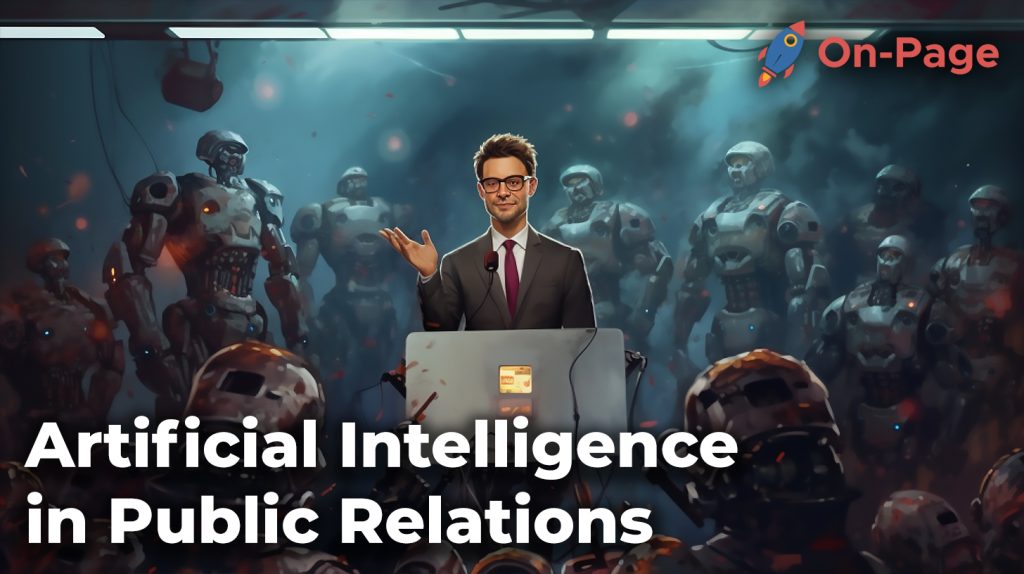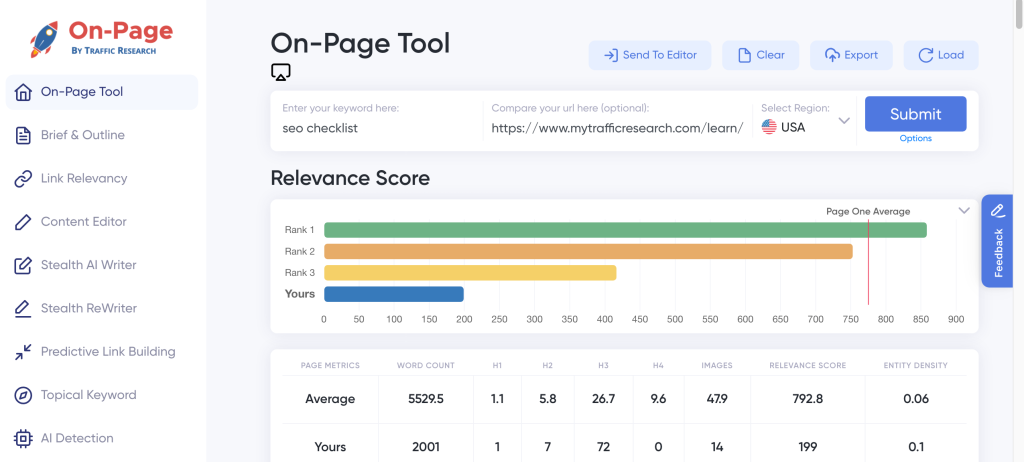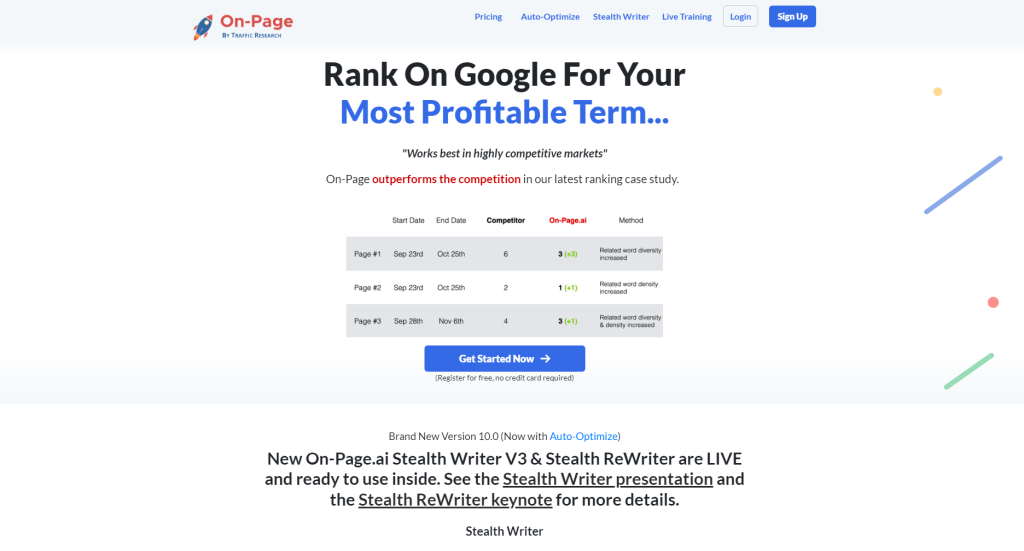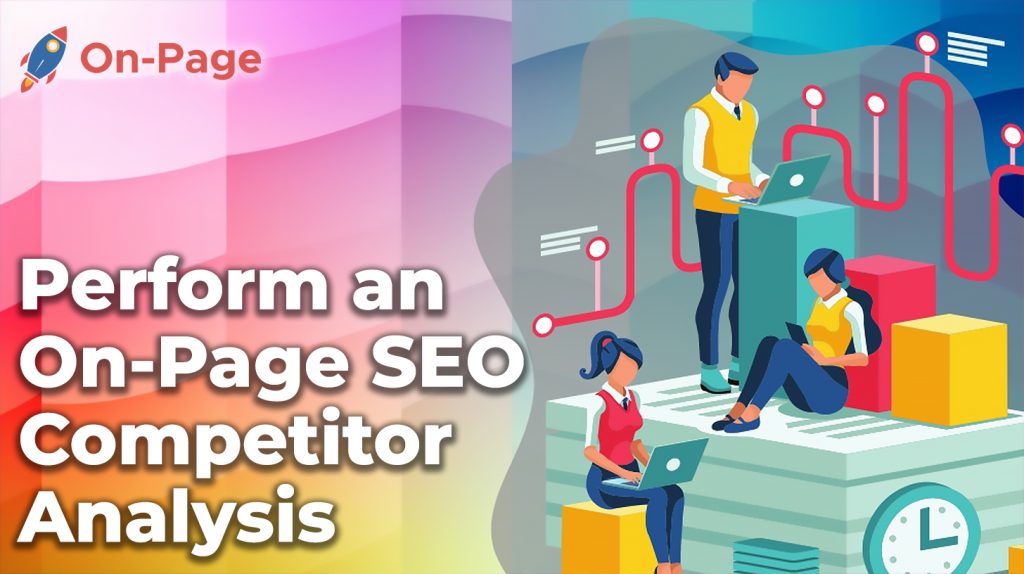
Picture this: a room buzzing with activity, public relations representatives tirelessly crafting and pitching stories to the media, hoping to secure coverage for their clients. Now imagine those same PR professionals joined by a powerful new teammate – one capable of analyzing billions of data points in seconds, predicting media trends with astonishing accuracy, and tirelessly churning out highly optimized content. Welcome to the revolutionary world of AI in PR, where artificial intelligence transforms traditional practices like never before, leveling up the effectiveness of public relations campaigns while offering unparalleled efficiency. Ready to dive into this brave new world? Keep reading with On-page.ai and find out how AI is reshaping the future of PR industry!
AI is being used in several ways in PR, including automating tedious tasks, analyzing data to develop more effective strategies and improve customer service, identifying trends and patterns in data to inform PR strategy, and monitoring brand reputation. While AI presents new opportunities for growth and development, it cannot replace human intelligence and judgment, and successful PR strategies still require the expertise and experience of skilled professionals.
What is AI in PR?
Artificial Intelligence (AI) is rapidly transforming many industries, including public relations (PR). At its core, AI refers to the capability of machines to perform tasks that typically require human intelligence, such as learning, problem-solving, and decision-making. In PR, AI systems can be used to automate many manual and repetitive tasks and enable more efficient workflows.
An important aspect of AI in PR is machine learning (ML), which involves training algorithms on large datasets to identify patterns and make predictions. By doing so, ML-powered systems can provide deeper insights into consumer behavior and preferences, leading to more effective strategies.
There are several areas in which AI is being applied in PR
Media monitoring
AI-powered tools can analyze vast amounts of data from various sources quickly and accurately. This enables PR professionals to monitor social media conversations, track brand mentions and media coverage, and identify emerging trends.
Content creation
The use of AI in content creation has evolved significantly in recent years. With tools like On-Page’s Stealth Writer, users can input a keyword and receive an article that passes our unique AI detection capabilities. In addition to content generation, some AI-powered tools can also evaluate the quality of content based on factors such as readability, sentiment analysis, and SEO optimization.
Audience targeting
By leveraging big data and ML algorithms, PR professionals can better understand their audience’s needs and preferences. This enables them to develop more targeted campaigns that resonate with specific segments of the population.
As these examples demonstrate, the applications of AI in PR are wide-ranging and powerful. By automating many manual tasks associated with PR work while simultaneously providing deep insights into customer behavior data analysis analytics more broadly speaking is a career path unto itself. While it is not expected for a beginner working directly within SEO practices to possess the breadth or depth required for a complete data analyst, by conducting SEO practices and in turn optimizing a website or landing page based solely upon AI-derived insights can yield immense improvements in rankings and traffic with significantly less working hours.
However, like any new technology, there are also risks associated with the adoption of AI in PR.
- Artificial Intelligence (AI) is transforming the public relations industry by automating manual tasks and providing deep insights into consumer behavior through machine learning. AI-powered tools can be used in media monitoring, content creation, and audience targeting for more effective PR strategies. However, the adoption of AI also comes with risks that need to be taken into consideration. SEO practices can greatly benefit from AI-derived insights, leading to improved rankings and traffic with less working hours.
The Benefits of AI in PR

Enhanced Data Analysis and Insights
One of the significant benefits of AI in PR is the ability to analyze vast amounts of data quickly and accurately. With traditional manual analysis methods, PR professionals would need to sift through mountains of data manually. However, with artificial intelligence applications, tasks such as sentiment analysis, topic detection, and media monitoring can be performed more efficiently and cost-effectively. This not only saves time but also provides crucial insights that can guide an organization’s decision-making processes.
Streamlining Content Creation
Writing quality content for public relations purposes is an essential aspect of the industry. By leveraging AI-powered content creation tools like On-Page’s Stealth Writer writers use our tool to create high-quality content within minutes that is well-structured and optimized for SEO ranking factors. Not only does this simplify the process of drafting highly targeted content, but it also ensures that search engine optimization (SEO) standards are met, resulting in increased visibility on search engines like Google.
Improved Audience Targeting
With every click-through and user engagement behavior tracking by utilizing analytics and marketing automation software technologies respectively – audience analytics information within PR research becomes increasingly specific. That being said targeting your potential consumer base has never been easier- thanks to AI-powered audience segmentation capabilities. Utilizing AI-driven machine learning algorithms allows for precise predictions regarding customer behavior. Through analyzing factors such as social media activity, online preferences and past purchases these segmentations can be broken down into smaller segments making it much easier to target the right users at the optimal times with messaging tailored to each sector.
As these examples illustrate, AI in PR also offers significant benefits that can help PR agencies stay ahead of the competition and deliver better results for their clients. However, as with any game-changing technology advancements, the implementation of AI-powered tools presents risks that should be tempered by the value they provide.
Enhanced Data Analysis and Insights
One of the key benefits of AI in PR is its ability to analyze vast amounts of data quickly and accurately. With traditional methods, PR professionals would have to manually comb through information, taking days or even weeks to come up with a comprehensive analysis. AI-powered tools can now perform this task in a fraction of the time. For instance, sentiment analysis tools that use natural language processing (NLP) algorithms can quickly scan social media platforms, news articles, and other digital sources to determine how audiences feel about a particular brand, product, or service.
- Sentiment analysis can provide crucial insights into audience perceptions. For example, if a brand experiences a drop in sales, analyzing sentiment data may reveal negative feedback from customers who are unhappy with a certain aspect of the product. The data might also reveal other factors impacting the brand’s image. This information helps PR professionals develop more effective communication strategies that address customer concerns.
- Another important tool for data analysis is predictive analytics. Machine learning algorithms can analyze historical data to identify patterns and predict future outcomes. In the context of PR, predictive analytics can help professionals anticipate audience reactions and identify potential crises before they occur.
- One example of this is predictive social listening tools which use machine learning algorithms to alert PR professionals when changes in audience sentiment are detected. This allows professionals to proactively address issues before they escalate into full-blown crises.
- Despite these significant benefits, there are also risks involved with relying solely on AI-generated insights. While AI technology has advanced rapidly in recent years, it’s not perfect. There is always the risk of errors and biases in machine-generated data.
To put it simply, AI is only as good as the data it has been trained on. If the training data contains inaccuracies or biases, the algorithms will produce flawed results. Therefore, it’s important for PR professionals to view AI insights as just one part of the decision-making process, rather than relying solely on them.
Streamlining Content Creation
Another area where AI is revolutionizing the PR industry is in streamlining content creation. With massive amounts of content being generated daily, from social media posts to news articles and blog posts, it can be challenging for PR professionals to keep up. AI-powered tools like On-Page.ai’s Stealth Writer can help ease this burden significantly.
AI-generated content is not only faster but can also be more relevant to audiences. For instance, with the right training data and parameters set in place, an AI algorithm can generate content that is tailored specifically to a target audience. This can lead to higher engagement rates and ultimately drive more conversions.
In fact, studies have shown that personalized content can increase click-through rates by up to 14%, while average website visits can increase by as much as 178%.
Another aspect of content creation that can be aided by AI technology is SEO optimization. SEO is critical in helping brands gain visibility online, but it can be complex and time-consuming. On-Page.ai’s On-Page Scans tool crawls websites like Google and provides accurate recommendations on how to optimize titles, headlines, body text and other components of web pages that impact their relevance score.

This tool eliminates guesswork from SEO optimization and ensures that brands are using best practices while working on their web pages.
Additionally, just like giving a roadmap to someone makes their journey easier, On-Page.ai’s Stealth ReWriter simplifies the process of revising existing content for SEO optimization. It suggests changes where necessary so that users don’t need to spend long hours trying various combinations of keywords and phrases.

- In a 2020 survey conducted by the World PR Report, it was found that 79% of senior PR professionals believe that AI will have an impact on the industry within the next five years.
- According to Statista, the global market for AI in media and marketing was valued at nearly $238 million in 2018 and is projected to grow to more than $1.9 billion by 2025.
- A study published in 2019 revealed that AI’s potential to transform the PR industry comes from its ability to automate tasks such as data analysis, content creation, and media monitoring, which can take up to 20% of a PR professional’s work time.
Improved Audience Targeting
One of the key benefits of AI in PR is improved audience targeting. With the help of AI-powered tools, PR professionals can gain insights into their audience’s interests, behaviors, and preferences. This information can then be used to develop more effective PR strategies and campaigns that resonate with the target audience.
For instance, let’s say a PR agency is working for a sports brand launching a new running shoe. The agency can use AI-powered social listening tools to track mentions of running shoes on social media platforms. By analyzing these conversations, they can identify patterns in sentiment, opinions, and purchasing behavior related to running shoes. Then, using this data, the agency can craft targeted messages that appeal to specific segments within the audience who are most likely to be interested in purchasing the new running shoe.
Another way AI helps improve audience targeting is through predictive analytics. By analyzing past performance data of campaigns, AI-powered tools can predict which content formats or messaging will perform best with specific audiences. This allows PR professionals to customize their messaging based on data-driven insights rather than relying on guesswork.
However, some argue that relying too heavily on AI for audience targeting could result in oversimplification and the loss of important nuance in PR strategies. It’s important to balance automated insights with human intuition and creativity when developing audience targeting strategies.
Think of it like cooking – while following a recipe can provide helpful guidance for achieving consistent results, adding your own personal touch such as seasoning or garnishing can elevate the final dish into something truly unique and memorable.
The Risks of AI in PR

Despite its many benefits, there are also some risks associated with AI in PR. One major concern is the potential for bias in automated decision-making processes.
- For example, if a PR agency relies solely on AI-powered tools to analyze audience data, they may miss out on meaningful insights that are not captured by the algorithms. This could result in missed opportunities or even misguided campaigns.
- Additionally, if the data used to train the AI algorithms is biased or incomplete, then the algorithms themselves will be biased. For example, facial recognition technology has been shown to have higher error rates for people with darker skin tones due to a lack of representation in the training data.
- Another concern is the potential for overreliance on automation and the loss of human connection in PR practices. While AI can certainly assist in data analysis and content creation, it cannot replace the value of authentic relationships built through interpersonal communication and empathy.
- It’s like driving a car – while advanced safety features like adaptive cruise control and blind spot monitoring can improve overall safety on the road, it’s still important for drivers to remain alert and aware of their surroundings.
To mitigate these risks, PR professionals should approach AI as a tool rather than a replacement for human expertise. They should critically evaluate their processes and data to ensure that they are not reproducing biases or perpetuating harmful stereotypes. In doing so, they can leverage the power of AI while remaining vigilant against its potential risks.
Balancing Human Expertise with AI Technology

While AI-powered tools have undeniable benefits in streamlining PR processes and improving efficiency, many experts agree that they are not enough to replace the human touch. In fact, it is crucial to balance human expertise with AI technology to get the best possible outcome.
For instance, consider media monitoring software that can analyze thousands of articles and social media posts at once. While this tool can help PR professionals keep track of relevant news and sentiment analysis, it still requires humans to interpret the data to develop actionable insights and strategies.
Additionally, while AI-generated content may be useful in some cases, it cannot fully replace human creativity and emotional intelligence that is necessary in crafting compelling stories that resonate with people. A recent report by the World Economic Forum emphasizes the importance of collaboration between humans and AI tools, stating that “the intersection of human experience and artificial intelligence will create more value than either could do alone.”
Some might argue that AI technology has advanced so much that machines can perform certain tasks better than humans. However, it is important to note that computers are only as good as the data they receive. Human intuition, empathy, and creativity provide a crucial perspective when it comes to decision-making based on incomplete or ambiguous data.
To put it another way, an AI-powered tool can help a chef select the perfect ingredients for a dish based on factors such as nutrition value or taste profiles but cannot replicate the years of experience and technique a human chef brings to cooking a meal. Similarly, PR professionals need to combine their wealth of experience and knowledge with intelligent tools that can enhance efficiency.
Finally, while AI technology has been instrumental in automating tedious tasks like data entry or research, its effectiveness is still limited by its ability to understand complex nuances in language or cultural differences. A recent study by Gartner found that 70% of customers still prefer human interaction over machine interaction for certain tasks such as complaint resolution or when dealing with sensitive information.
In conclusion, while AI tools have the potential to streamline PR processes, saving valuable time and resources in the process, it is crucial to balance their usage with human expertise. On-Page.ai is an advanced SEO tool powered by AI that combines the power of machine learning with years of human experience in developing effective PR strategies. Register with On-Page.ai, you can trust that your business is getting the best possible outcome by combining the latest technology with human expertise.
Most Common Questions
What ethical considerations are involved in using AI in PR?
The use of AI in PR raises several ethical considerations. The first and most important one is privacy and data protection. As AI relies on collecting large amounts of data to generate insights and recommendations, PR agencies must ensure that they are handling personal information ethically and with transparency.
Another ethical issue is bias AI systems are only as good as the data they are trained on, meaning that a biased dataset can lead to biased results. Therefore, PR professionals must be cautious about the potential biases in their algorithms and monitor them regularly.
Moreover, there is also a risk of job displacement caused by AI adoption in PR. A study by Deloitte found that 36% of jobs in the PR industry could be at risk of automation by 2025. This raises questions about the social responsibility of companies implementing AI technology.
Lastly, the ethical dilemma of responsibility arises when using AI for decision-making or messaging. If something goes wrong, whom shall we blame? The machine or human designer, operator, or owner?
As AI technology continues to advance, it is crucial for PR agencies to navigate these ethical dilemmas thoughtfully and transparently while balancing the potential benefits and risks.
How does AI improve efficiency in public relations?
Artificial Intelligence (AI) is revolutionizing the Public Relations Industry by streamlining tedious manual processes and providing data-driven insights. AI-powered tools can save time, increase productivity, and improve decision-making.
One way AI improves efficiency is by automating media monitoring and sentiment analysis. With the help of natural language processing (NLP), AI tools can process thousands of news articles, social media posts, and reviews in real-time. This eliminates the need for human analysts to manually comb through the data and allows PR professionals to react quickly to emerging trends or issues.
AI also helps identify influencers and target audiences more effectively. By analyzing social media behavior and identifying patterns, AI-powered tools can accurately match brands with the right influencers, increasing engagement rates and ROI.
According to a study by Meltwater, 40% of PR professionals believe that AI has had a significant impact on their workflow. Additionally, a report by Forbes Insights found that 44% of executives surveyed believed that AI would be instrumental in improving efficiency across various industries.
In conclusion, AI offers tremendous potential to improve efficiency in Public Relations by automating manual processes, providing valuable insights, and enhancing decision-making capabilities. The integration of AI-powered tools like On-Page.ai will continue to transform the industry as it moves towards a more data-driven approach.

What are some examples of successful implementation of AI in PR?
Artificial intelligence (AI) is transforming the public relations industry in many ways, and there are already several examples of successful implementation of AI in PR. One such example is the use of chatbots for customer service and engagement. According to recent research by Oracle, 80% of businesses plan to use chatbots for customer service by 2020, which will save an estimated $8 billion a year.
Another example is the use of AI-powered sentiment analysis tools that can analyze large volumes of social media data and provide insight into how consumers feel about a brand. For instance, PepsiCo leveraged such software during its Super Bowl ad campaign, resulting in a 14-point lift in brand favorability score.
Additionally, many companies utilize AI to automate their media monitoring efforts. This saves time and resources while ensuring they always stay on top of trends within their industry.
Overall, the implementation of AI has been successful in helping PR professionals better engage with customers, understand sentiments around their brands and streamline their efforts. And as technology grows more advanced in the coming years, we can expect even greater strides in this arena.
How can AI be used to personalize and tailor communication with audiences?
One of the most significant benefits of AI in PR is its capability to personalize communication with audiences. AI-powered tools can analyze audience behavior, preferences, and interactions with a brand, enabling PR professionals to adapt their messaging and outreach tactics accordingly.
For instance, AI can help PR professionals segment their audiences based on various factors such as location, age, interests, and preferences. With this information, AI can assist them in delivering personalized messages to each segment of their audience. According to a recent study by Accenture, personalization can boost conversion rates by up to 70%.
Another way AI can personalize communication is through chatbots. A chatbot is an AI-powered tool that uses natural language processing (NLP) to converse with website visitors and customers in real-time. Chatbots can answer questions, provide recommendations, and even deliver personalized content based on users’ preferences and past interactions.
Furthermore, AI can help PR professionals tailor content for different platforms and formats automatically. For instance, using machine learning algorithms, AI tools can analyze user behavior across various social media platforms to determine the types of content that will resonate best with them.
Overall, AI provides PR professionals with valuable insights into their target audience’s behavior and enables them to adapt their communication strategies accordingly. By utilizing personalization techniques enabled by AI tools such as chatbots, they can create more relevant and engaging messaging that delivers better results.
Can AI be used to predict public opinion or sentiment towards a brand?
Yes, AI can be used to predict public opinion or sentiment towards a brand. There are a number of tools available that use machine learning algorithms to analyze social media and other online sources in near-real time, providing insights on how people are talking about a particular topic or brand.
For example, the social listening platform Brandwatch uses AI-powered sentiment analysis to automatically identify and categorize mentions of a brand as positive, negative, or neutral. In addition, they offer a tool called Vizia that allows companies to monitor social media conversations in real-time and make data-driven decisions based on that information.
Another example is IBM Watson’s Personality Insights, which uses linguistic analysis to determine the personality traits driving consumer behavior and attitudes towards a brand. By analyzing social media posts, blogs, and customer reviews, Watson can provide insights on what consumers value most about a brand and how they perceive its messaging.
According to a report by MarketsandMarkets, the sentiment analysis market size is expected to reach $6.7 billion by 2028, with North America being the largest contributor to this growth. This shows that AI technologies for predicting sentiment towards brands are becoming increasingly valuable for companies wanting to stay ahead of their competition in the PR industry.
In conclusion, while AI cannot predict public opinion or sentiment with 100% accuracy, it can provide valuable insights at scale that help companies better understand how their brand is perceived and make more informed decisions regarding their PR strategies.




